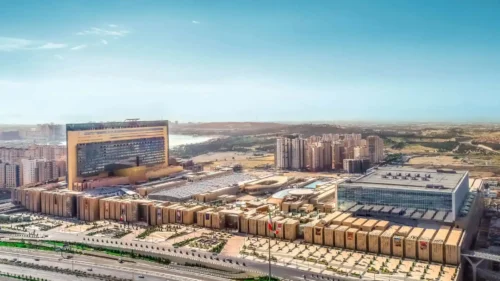
وبلاگ سپهران | Travel Guide | Cuba Travel Guide
Travel guide to Cuba, everything about Cuba
Learn more about Cuba tourist attractions. In this article, we have tried to provide you with useful information about Cuba and its top tourist attractions along with the traditions and customs of the people of this region.
We suggest you stay with Sepehran blog until the end of the article
The country of Cuba consists of the Caribbean archipelago and is considered a part of Latin America. The capital of this country is called Havana and it has many historical and touristic monuments. If you plan to travel to this country and like to spend your vacation in a different way Always stay with us with Sepahran’s blog.
Cuba is a country in the Caribbean region and is located on an island with the same name. The island of Cuba is located in the northernmost part of the Caribbean Sea, which is bordered by the Caribbean Sea to the east, the Atlantic Ocean to the north, and Mexico and the Gulf of Mexico to the south. The capital of Cuba is Havana and the official language of this country is Spanish. Therefore, the travel guide to Cuba can be useful for you.
Keep in mind that Cuba has a tropical climate and has two distinct seasons:
1. Dry season (November to April): This season is considered the best time to travel to Cuba. The dry and sunny weather in this season allows you to enjoy beautiful beaches and water activities such as swimming and sea activities. In this season, the number of tourists is also more and the prices may be high.
2. Rainy season (May to October): In this season, Cuba takes on a special beauty due to its seasonal rains. Gardens and pastures become green and beautiful.
Therefore, the number of tourists in this season is less and the prices are reasonable.

The best time to travel to Cuba depends on the weather characteristics and the tourist activities you want. But in general, the winter season (leading to early spring) is known as the best time to travel to Cuba. In this season, the weather is mild and dry, and temperatures usually vary between 20-25 degrees Celsius. This time is usually considered from November to April. During the spring and summer season, i.e. May, June, July and August, the weather is very hot and humid and may cause discomfort for some people. These seasons are also the rainy season and the possibility of tropical storms forming in the coastal areas.
In the travel guide to Cuba, you will get to know the most famous cities in Cuba for tourists
Havana is the capital of Cuba and the largest city in the country. This city is also the largest port in Cuba and is essentially the center of trade in Cuba. The population of Havana reaches about two million and one hundred thousand people and its area is about 72,826 square kilometers. All these privileges and the size of this city made Havana to be considered the largest and most populated city in the Caribbean region and ranked third in terms of urban space in this region.
In the 16th century, the Spanish founded the city of Havana because of its strategic location. Basically, this city can be considered as the stepping stone of the Spaniards, and at that time many Spanish ships, which were full of treasure, stopped in this city. Philip II, who had the title of King of Spain in 1592, gave Havana the title of “City” and then built castle and walls around the city to protect it. It should be noted that in the war between America and Spain, the drown of the American warship made this city famous as Havana.
Contemporary Havana is divided into three main parts. Old Havana, Vedado, new suburbs of the city. Old Havana, which is considered one of the main parts of this city, refers to the central part of the city of Havana, which has a very historical texture and has preserved its traditional appearance. Every year, more than one million tourists travel to Havana to visit Old Havana.
It goes without saying that the historic center of Havana was declared a World Heritage Site by UNESCO in 1982.The city of Havana, in its historical part, contains monuments and other historical works and looks quite rich in terms of culture, architecture and history. Baroque and neoclassical buildings, restored historical monuments, cobbled streets and squares all contribute to creating a beautiful image in the old part. San Cristóbal Church, Castillo de la Real military fortress, Plaza Vieja and Plaza de Armas, which are public squares of the city, and Museo de los Capitanes Palace are among the most visited and beautiful buildings in Havana.
The city of Havana is among the cities with a tropical climate. Another title that the city of Havana has obtained in recent years (since 2015) was that it was called one of the seven most attractive cities of the contemporary world, along with other cities such as Vigan, La Paz, Doha, Beirut, Durban and Kuala Lumpur.
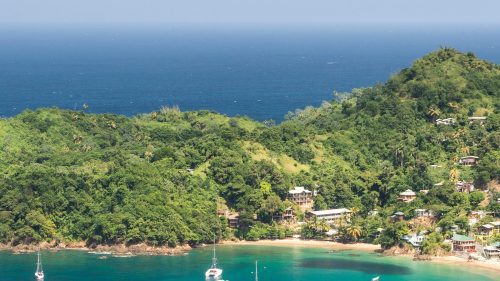
In this part of the travel guide to Cuba, we will talk about Trinidad.
It is a quiet and small city on the south coast of Cuba, which was founded in 1514. This Cuban jewel is known as one of the Spanish cities of the Caribbean. In the early 16th century, a Spanish person named Diego Velazquez built “villas”. These villas were the title that was applied to the seven colonial cities built by him.
Cuba’s Trinidad was ranked fourth among these seven colonial cities. One of the advantages of this city compared to other villas such as Santiago de Cuba and Havana is that, unlike them, the state of Trinidad has remained untouched and unchanged. So that it still has its colonial atmosphere and old shape. Most of the architectures in the city of Trinidad are from the 17th to the 19th centuries. By the way, the commercial prosperity of Trinidad in this period was also more in the field of sugar than in the previous years.
The colorful cottages around the roads of Trinidad and its suburbs shine in the sunlight and create a pleasant and lovely scene. The Andalucian hills, which are located in the territory of Trinidad, host a church that is placed on top of them. Tropical forests and the Sierra del Scambre mountains surround the city. One of the other attractions of Trinidad is the Sancti Spiritus road, which is located in the east of this state. In this street, you can see buildings left over from the 19th century. This area provides excellent driving and riding conditions for visitors.
In Trinidad, historic and restored buildings and structures can be found, which create a semi-contemporary image next to the cobbled streets of the city center. Attention to all these details keeps the city’s colonial feeling alive. Small museums have also been built in the city, which can be lovely and exciting for those interested in the history and past of this city. One of the natural environments of Trinidad, which is definitely pleasant and enjoyable for many people, is the Playa Ancon beach of this city. Playa Ancon is the main beach of Trinidad and is about twenty minutes away from the city itself. The combination of sun, sea and beach air will definitely be pleasing to every viewer.
It seems that traveling to Trinidad and exploring its alleys and streets and visiting squares covered with palm trees is a beautiful and enjoyable experience. Currently, the popular city of Trinidad is considered as one of the touristic cities of Cuba. For this reason, many people travel there every year and often, the streets of this city are full of foreign visitors. The historic city of Trinidad is also registered as a UNESCO World Heritage Site.
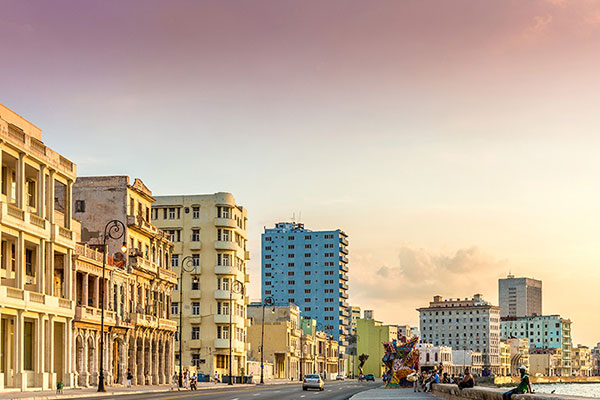
Malcon is a coastal boulevard in the city of Havana, which is considered one of the natural attractions of this city and the country of Cuba. Malkoun beach boulevard is also known as Malkoun promenade. The construction of Havana’s Malcon promenade was done in 1901 and 1902, which coincided with the Provisional Military Government of the United States.
So, the purpose of building this coastal boulevard was to protect Havana from raging waves, and for this reason its walls show resistance against the waters like a dam. However, the motivation of construction and its recreational role should not be ignored. It is interesting to know that with the beginning of the construction of Malkon Boulevard, after 500 meters of it was built, according to the decision of the American government, there is a square in its continuation.
Finally, this beautiful square is located at the intersection of del Prado and unlike the historical and traditional style of Havana, it is made of steel concrete.
Like any other coastal area, a walk along Malkon Boulevard, especially if it is accompanied by watching the sunset, will surely leave a beautiful and pleasant image in the memory. Havana’s Malcon Coastal Boulevard is a relatively long boulevard that starts from about seven kilometers after Old Havana and continues to the Vedada and Plaza areas, which are the commercial centers of the city. The length of the mentioned route is about eight kilometers.
Colorful historical buildings left over from the 20th century are located on the side of Malkoun Boulevard. These buildings are built in different models of architecture and art and can be seen in various styles from Decoart to New. The statue of Jose Marti is also located on the same beach path that you can visit. If you enjoy photography, this area can definitely have some great subjects for you.
Malkun Boulevard provides the opportunity for visitors to visit the local people of this area. Because mainly, this boulevard is considered a very suitable place for families and young couples to have fun. Also, people interested in fishing who do this recreationally can have fun and fish in Malcon Havana. In any case, it seems to be a pleasure to walk along the Malkon and enjoy the refreshing ocean air, both for locals and tourists.
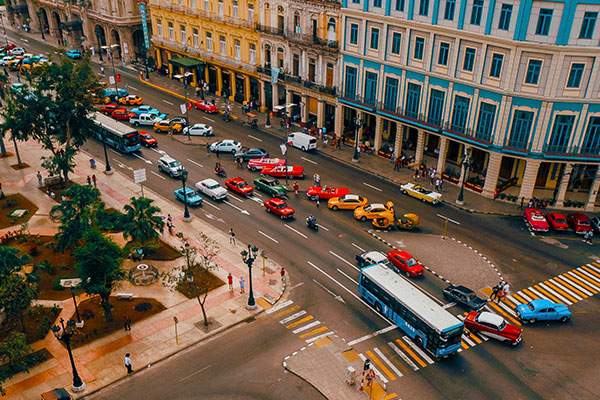
The Museum of the Revolution is located in the former presidential palace of Cuba, and it is not without pleasure to see it even from the outside. The Cuban Revolution led by Fidel Castro is the most important event in the history of Cuba and one of the biggest events in the history of the world. So that many films and books have written about this important event. However, if you would like to learn more about this revolution, we recommend you to visit the Museum of the Cuban Revolution.
The Museum of the Cuban Revolution is located in the old part of Havana and has an old building. This building dates back to 1909, and before the Cuban revolution, it was known as the presidential palace, and people like Mario Garcia Manocal (then president of Cuba) lived in it. After the Cuban Revolution was over, all the remains related to the revolution were collected in this place and eventually turned into a museum. The opening of this building as the Revolution Museum was officially announced in 1974.
You may be interested to know that the architects of this historical and prominent monument were people like Rodolfo Maruri and Paul Belau, and its construction cost about 1.5 million Cuban pesos.
The building of the Revolution Museum, due to its grandeur and splendor, has always attracted the attention of many tourists from all over the world. If we want to explain the details of its construction, it should be said that the external walls of this huge building are made of stone, which depict its power and greatness.
Inside the building, reinforced concrete has been used to construct its various parts. The internal staircase of the Revolution Museum is marble and very beautiful. One of the strengths of this magnificent building is its tiled arch, which was designed by the prominent architects of that time named E. Valdrama and M. Gonzalez; The end of this arch ends with pottery.
Statues of famous people such as Che Guevara and Camilla San Fugues are also displayed in this museum. Also, if you visit the back of the museum, you will definitely see a stunning picture of a “Granma” boat. It is interesting to know that this picture is of the same boat that transported Fidel Castro and his companions from Mexico to Cuba. Elsewhere in the Revolution Museum, you will find an iconic image that belongs to the crashed plane of Operation Pig.
In order to enjoy this museum and get the most information about the Cuban Revolution, it is better to start from the top floor. In this way, you can see the course of the Cuban revolution by entering different floors. This means that in each floor, the events before the revolution, the events during the revolution and the events after it are depicted in order.

In the travel guide to Cuba, Cayo Coco Island can be very exciting for any tourist.
Cayo Coco Island is a popular and unique natural attraction of Cuba, which is of great importance in terms of tourism. Cayo Coco is an island with quiet and beautiful beaches located in one of the most remote areas of Cuba.
So, Cayo Coco Island in Cuba is one of the parts of the Jardins del Rey archipelago, which is a combination of Camaguey and Sabana. The island is originally connected to its mainland by a bridge. However, many people prefer to travel to Cayo Coco by plane.
It is interesting to know that many great poets and writers have written unique and valuable articles about this island. If you have read The Old Man and the Sea and Islands in the Storm by Ernest Hemingway, you may be interested to know that the sea mentioned in these books is related to the shores of Cayo Coco.
It was mentioned earlier that Cuba has many tourist attractions that attract tourists from all over the world to visit them. But in every tourist tour that goes to Cuba, visiting Cayo Coco Island, this natural and lovely attraction of Cuba, is undoubtedly one of the priorities. In this way, they can create a pleasant and unforgettable memory for tourists and travelers. If you are planning to have a leisure trip to Cuba, we recommend that you spend some time on Cayo Coco Island and enjoy its beautiful sunny beaches.

Another attraction in the travel guide to Cuba is Cayo Coco Island. The solitude of Cayo Coco Island is also considered one of the distinctive features of this island. Especially for people who escape from the hustle and bustle and want to relax, Cayo Coco is considered the best option for recreation.
Among the attractions of this remote island, we can mention its suny beaches. Also, the presence of a five-kilometer sand line that originates from Flamenco Beach on the side to the Atlantic Sea of the island creates a beautiful and eye-catching image.
On the other, the calm and stable beach of “Prohibidad”, whose border does not show any progress, has a calmer nature.
The nature park of this island is considered a safe home for crocodiles, turtles and flamingos, which animal lovers can also enjoy watching. Cayo Coco Island also has amazing species of birds that you will undoubtedly be interested in seeing. Cayo Guillermo is also a collection of resorts that provide many facilities to travelers and tourists. You can take a short trip from Cayo Coco to the beautiful beaches of Playa Pilar in Cayo Guillermo and spend some time having fun.
The magnificent beach of Guardalacão, a more distant and quieter beach than Varadero, with white sand and warm waters, is another of Cuba’s best natural attractions. This beautiful and quiet beach is located in the Holguin province of Cuba. The shining beaches of Guardalacao are covered with tall and green palm trees. For this reason, it has a beautiful and eye-catching nature that can be attractive and pleasant for every viewer.
One of the most unique experiences that you can get on the beautiful beaches of Guardalacao is diving and sunbathing in the waters of this island. This entertainment is unique in that you can record wonderful moments by observing beautiful corals and fantastic views of underwater creatures.
In the travel guide to Cuba, you will get to know the entertainments of the beaches of Guadalajara.
Guardalacao beach is so beautiful and lovely that even the local people go to this resort with tours and day trips. Day trips to this area include canoeing, hiking in the jungles of these beaches, and tours of Santiago, Cuba. The tropical forests of this popular beach keep various species of native animals such as Cuban hummingbirds and Cuban lizards. A daily local market is also held on the shores of Guadalajara, which is a good place to buy souvenirs from traditional Cuban handicrafts.
Jet Maita is another attraction of Guardalacava beach. Jet Maita is an option that will be considered in one-day trips to the places of interest in Cuba. This scenic place includes an area that has an indigenous Indian site and a restored Taíno village. One of the main tourist attractions in Guadalajara is the Taino Museum and the Museum Village between Guadalajara and Baines.
The importance of Guadalajara beach in the tourism of Cuba has become so much that Frank Pais Airport is located near this place. It is interesting to know that the tropical rainforests of Baracoa, which are located near this airport, are among the large and popular tourist destinations.
The beaches of Guadalajara, Cuba, are considered cool in terms of climate. Thus, if you are looking for a cool, sunless tropical place with recreational facilities where you can spend a few days and relax away from all the hustle and bustle, we suggest you the green and popular beach of Guardalacão.

Viñales Park is one of the most popular attractions in Cuba. This park is located in the valley of Sierra delos Organos, which is located in the north of Pinar del Rio. This valley national park, registered in the UNESCO cultural heritage, looks very fresh and beautiful with its breathtaking and amazing scenery.
It is interesting to know that they grow tobacco, fruits and vegetables in Viñales National Park. In fact, the floors that make up the valley of this park are agricultural areas. In the middle of this green valley, there are hills of limestone rocks in the form of rocks, which are called Mogots in the local term. These hills, whose height sometimes reaches 300 meters, have created amazing views in the center of this valley and are considered a very suitable option for those who are interested in climbing. Of this type of limestone rocks that can be compared with Cuban rocks are found only in China and Malacca Island. There are also many caves in the hills around Viñales Park.
The environment of this park is such that you can easily ride on its hills. Even if you like walking, you can enjoy walking along the long walking paths of this park.
In the travel guide to Cuba, you will get to know Vinales Valley.
Viñales Valley itself has a population of about ten thousand people and is a favorite area of Fidel Castro. Because in this area the mountains are very beautiful and the farmers are able to grow the best tobacco in the world.
Like any other ecosystem, Vinales Valley is suitable for certain plant and animal species. Mountain palm and Microcycas calo-coma are two species of Vinales plants. Animals such as hummingbird, bee, Cuban todi, Cuban trogon and Cuban solitaire are among the animal species of Viñales Valley.
One of the other beauties that you can see in addition to the natural attractions of Vinales Valley are the paintings that are drawn on one of the high rocks of this valley. This painting, which goes back to our prehistoric times, shows the evolution of life in Cuba. In fact, this painting in twelve pieces depicts the entire process related to the evolution of humans and animals in different stages. The dimensions of this painting are 120 x 160 meters. It should be noted that the rock related to this painting has been drained to prevent destruction and erosion due to heavy rainfall.
Tourist tours, usually in their one-day tours to the city of Havana, Cuba, definitely put this national park in their priorities in order to provide a complete set of entertainment for their travelers, including hiking, horseback riding, climbing, and nature watching.

The old city of Baracoa is one of the historical and beautiful attractions of Cuba, which was built in the Guantanamo area and became known in the 60s. In fact, at this time, the opening of a highway called Farula, which passed through the city of Barakwa, made this city known to the people. Farola highway itself was built in an area far away from the city; So that you can still feel the feeling of being far away. In fact, the Farola Highway provides a 49-kilometer mountain road from the town of Baracoa to Takajobajo.
Of course, you need to know that the founding of the city of Barakwa dates back to 1511 AD, but no one knew Barakwa before the construction of the highway. At this time, they started building the first church in this area. The old architecture of Barakwa city will be very attractive and interesting for people interested in history and traditional architecture. It is better to know that Baracoa is the oldest city in Cuba. You can use many daily flights to travel from Havana to this city.
An issue that can be interesting for you in the travel guide to Cuba is related to the architecture of Baracoa.
The city of Barakwa, with its unique traditional architecture, has attracted tourists to this green colonial area. In this green city, beautiful beaches and breathtaking waterfalls have caused cold weather to follow steamy forests. If you stand on the flat top of Yunk (meaning Sin), you can easily see all the tropical scenery in this area. For this reason, climbers of this area and other tourists have enough motivation to conquer this 589-meter peak and can enjoy the surrounding natural scenery after reaching the top. It is interesting to know that rare birds and special plants grow on the hillside, and this is the reason why this area has been included in the UNESCO protected heritage list.
The point that you should pay attention to when visiting the city of Baracoa, Cuba is that to have a great view of the beauty of this city, it is better to go to the Farula Highway.
Join us in the travel guide to Cuba to learn more about the beautiful city of Baracoa.
Another place that is worth visiting when visiting Baracoa is the Municipal Museum of this city. The museum’s main location is at the Mattachin military base, allowing visitors to gain an insight, however brief, into the fascinating history of Baracoa. It goes without saying that the castle itself has a beautiful view of the bay.
If you go about 20 kilometers to the northwest of Baracoa, you will reach the beaches of Playa Maguana, which are known as one of the best coastal areas. Some recreational facilities are available to tourists on the beaches of Playa Maguana. For example, people can rent bicycles to ride on these beaches and enjoy the scenery. As a great experience, you can also enjoy the taste of mangoes and papayas of this region.
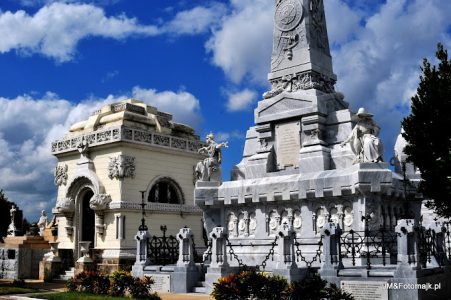
Colon Cemetery in Havana is a famous Cuban tourist attraction. This fame is largely due to the statues that were built as memorials on the graves of the dead. Since the opening of this cemetery, that is, from 1876 until today, more than one million bodies have been buried in its soil. It should be noted that this process continues and Colon Cemetery is known as an active cemetery.
The thing about the Colon cemetery is that because there is not enough space to bury the new dead, they dig up the old graves almost every three years and put all the remains of the corpses into boxes and store them. transferred In the 19th century and of course in the early 20th century, there was no news of storing extra bodies. So that all the bones that were taken out of the graves were left in the cemetery area without any respect. At that time, they had to pay rent for every 5 years that the bodies remained in the grave.
In this part of the travel guide to Cuba, we reach Havana. The capital of Cuba, that is, Havana, did not have any kind of cemetery in the distant years, and all the dead were transferred to the crypt of the church. Since 1806, the church did not have the capacity to keep the dead, so they provided a new place for the dead to rest. For this reason, they reopened the Espada cemetery.
After the outbreak of cholera, when a large number of people fell ill and died, all the cemeteries that accepted the dead were filled, and Espada was no exception. This led to the reopening of Colon Cemetery and the closing of Espada Cemetery about a decade later.
Despite the newness of this cemetery, after twenty years, people lacked space to bury their dead, and Colon was no longer enough for the dead of Havana. Finally, they decided to remove the remains of the old dead and replace them with new ones. It should be mentioned that at that time, for every 5 years that the dead remained in the grave, the survivors were required to pay 10 dollars, and if they did not pay this amount, the body was pulled out and left in the cemetery area. The volume of bones was so large that it gradually became an attraction for foreign guests.
In 1898, in the war between Spain and America, American soldiers were standing on the bones of the dead. Many of them even took the bones as souvenirs or paraded with them. This process continued until finally an American general named Brook ordered that all these bones be buried again.
In this article, we tried to provide useful information about travel guide to Cuba. Share your thoughts about this article with us.
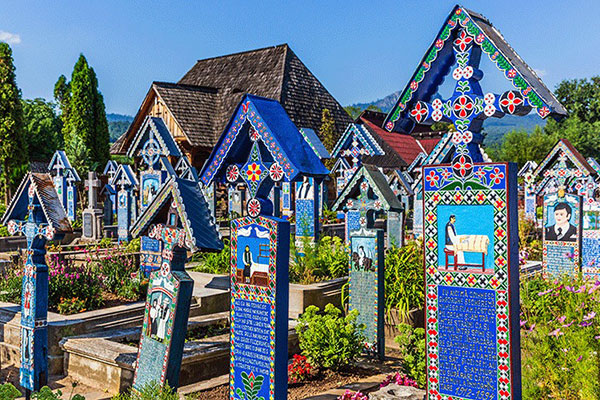
Cuba, with its turbulent history, captivating music, diverse culture, and stunning nature, is one of the attractive tourist destinations in the Caribbean. This island, famous for its old classic American cars, has numerous sightseeing spots. Here are a few of them:
Varadero: One of the best beaches in Cuba, it’s known for escaping the crowds, water activities, and viewing stunning sunsets. In fact, Varadero is the largest and most exciting coastal city in the Caribbean.
Cienfuegos: This city is famous for Cuban Son music and is considered one of the cultural centers of Cuba. Cienfuegos is a fusion of various architectural styles and possesses most of Cuba’s historical attractions. It’s also registered in UNESCO.
Viñales Valley: An area for nature lovers. Mountains, caves, and wetlands are among the attractions of this area. If you love wooden houses with attractive terraces, Viñales Valley might be the best choice for you. It’s a beautiful and lush valley with a picturesque view that captivates any observer. In fact, you can see its simulation in many cartoons and movies.
Sierra Maestra: Another natural attraction of Cuba. Its green forests and amazing hills provide the perfect conditions to wander for hours in the heart of nature, away from the hustle and bustle, and fully enjoy the delightful and temperate climate of the area.
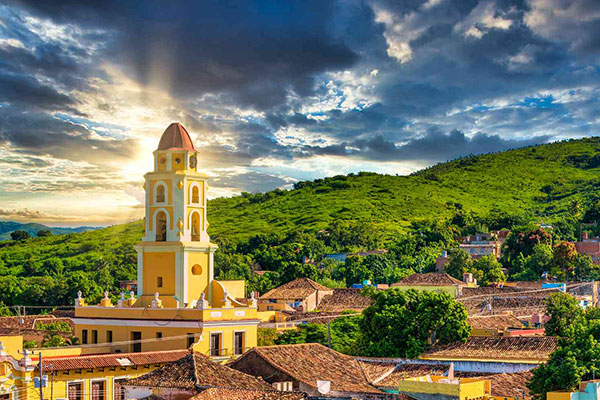
Cuba is one of the countries known for its beautiful and appealing nature. This island, with its breathtaking landscapes, pristine beaches, verdant mountains, lakes, caves, and vast forests, draws every tourist toward itself.
Some of these attractions include:
Embalse Hanabanilla: This lake is a heavenly destination for those who love peace and quiet. This beautiful and serene lake is located in the Escambray Mountains, which are themselves a natural attraction of Cuba.
León Island: This island is located in the Gulf of Cuba and is famous for its beautiful crystalline beaches, corals, and diverse marine life.
Guoína Lake: Situated in the Matanzas province, this lake is a wonderful spot for boating and fishing.
Mountain Caves: Caves have always fascinated humans. At one point, these caves were home to many. Cuba has numerous mountain caves that you can explore. By visiting these caves, you can witness the uncharted lands within the mountains and encounter many unknowns.
Zapata National Park(Parque Nacional Ciénaga de Zapata): This marshy area, located in the Matanzas province, is famous for its broad spectrum of unique flora and fauna. In fact, it’s an ideal destination for nature lovers. Within Zapata National Park, you’ll encounter captivating birds that can’t be seen anywhere else in the world.
Due to its remote location and low population, this park has remained untouched and preserved. Interestingly, this area, because of its unique animal coverage and 150 rare bird species, has been chosen as a biosphere reserve by UNESCO.
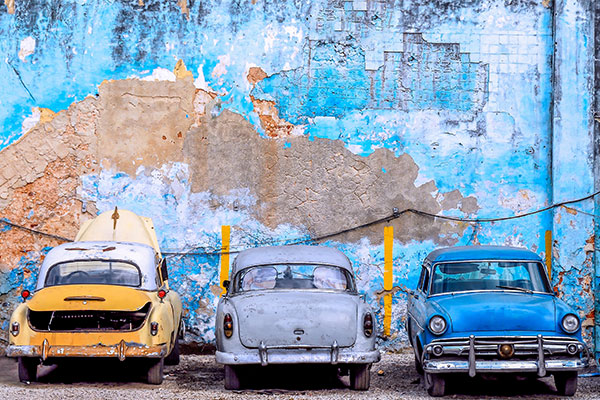
If you’re seeking diverse cultures, you should know that the Cuban people boast the most diverse culture in the Caribbean region. Cubans are a mix of different ethnic groups, including Spaniards, Africans, and other groups. In fact, mestizos (mixed-race), black, and white people primarily constitute the Cuban population.
Cuban Culture: Cuban culture is a blend of Spanish, African roots, and also American influences.
Music: Son, bolero, mambo, cha-cha-cha, and salsa are among the local Cuban musical genres.
Dance: Salsa is one of the most popular dances in Cuba.
Food: Cuban dishes often include rice, beans, meat, and bananas.
Language: The official language of Cuba is Spanish. However, due to its history with other nations, some words and phrases from other languages are also used. Notably, many Cubans have a relative proficiency in English.
Education in Cuba: Education in Cuba is free and compulsory. More than 99.8% of Cubans are literate and have access to a quality education system. Universities in Cuba are also free, and many young people attend university after completing their secondary education.
Economic Status: Cuba has a nationalized economy that is primarily based on healthcare, educational services, and tourism.
Other Features: Cuba is renowned for its public health and free medical services for all its citizens. The country has also made significant advances in vaccine and drug production.
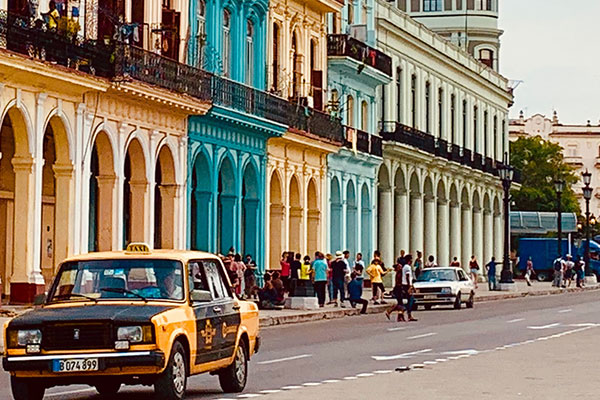
First, it should be noted that Cuba is an island in the Caribbean region and does not directly share borders with any country. However, due to its geographical location, it has close relations with several countries in the region.
Relations:
Impacts:
Overall, as you might imagine, Cuba’s geographical and historical position has led to complex relations with its neighboring countries, especially with the United States. Nevertheless, Cuba’s culture and history are also influenced by the cultures and histories of its neighbors.
The Cuban currency situation is complex. As of the current date (2021), Cuba has had two types of currency: CUP (Peso Cubano) and CUC (Peso Convertible).
Changes and Currency Consolidation: In January 2021, the Cuban government announced that, in an effort toward economic reforms, it was phasing out the CUC and retaining only the CUP (peso) as the official national currency. This shift represented the consolidation of the two currencies and the removal of one.
These reforms were conducted alongside other changes in Cuba’s economic structure. However, it’s essential to note that Cuba has a state-run economy, and many of its commercial and economic regulations can change rapidly.
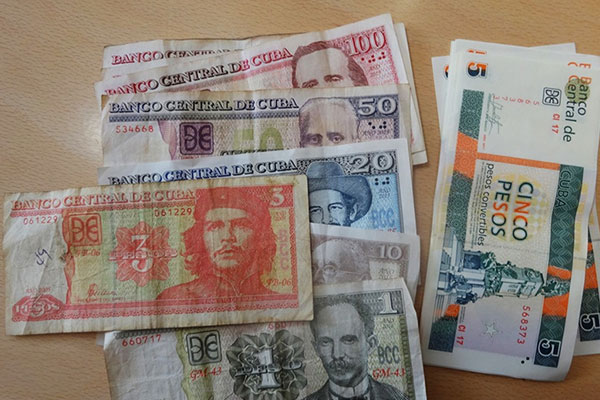
The Cuban flag is one of the national symbols that represents the history and national identity of Cuba. Here are some details regarding the design and meanings of the different elements of the Cuban flag:
Design: The Cuban flag is horizontal and is divided into five red stripes and four blue stripes. There’s a red triangle on the left corner of the flag, within which a white star is placed.
Blue Stripes: These represent the three main provinces of Cuba at the time of independence.
Red Stripes: Symbolize the blood shed for Cuba’s independence and freedom. Red Triangle: Represents the principles of the nation, namely unity, revolution, and freedom.
White Star: Known as “La Estrella Solitaria” or “The Lone Star,” it symbolizes freedom and independence.
The Cuban flag was first adopted on March 19, 1850, by the initial group of fighters for Cuba’s independence from Spain in New York. After the victory in the Cuban War of Independence and the end of Spanish rule in 1898, this flag was accepted as the official symbol of the country.
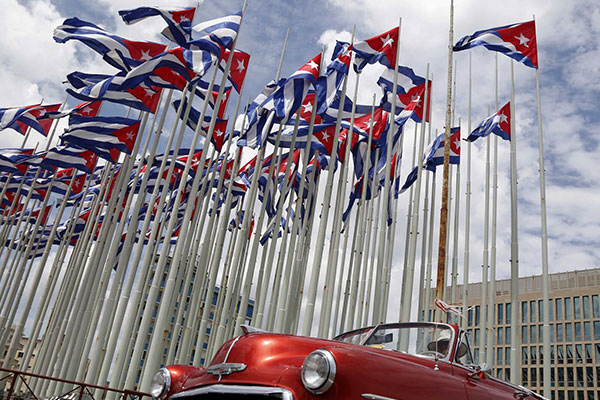
A tour to Cuba can be one of the most unique and thrilling experiences for you. In Iran, many travel agencies offer this tour. By reaching out to them, you can benefit from the tour services and other amenities. To travel to this country, you first need to apply for a visa. Some essential tasks and considerations for this journey include:
Cuba is an island with a rich culture and history, deeply influenced by its political past. Despite economic and technological limitations, its people live with enthusiasm and energy, sharing their vibrant culture with visitors. The country boasts abundant natural resources and numerous tourist attractions.